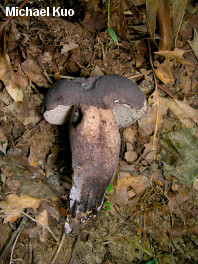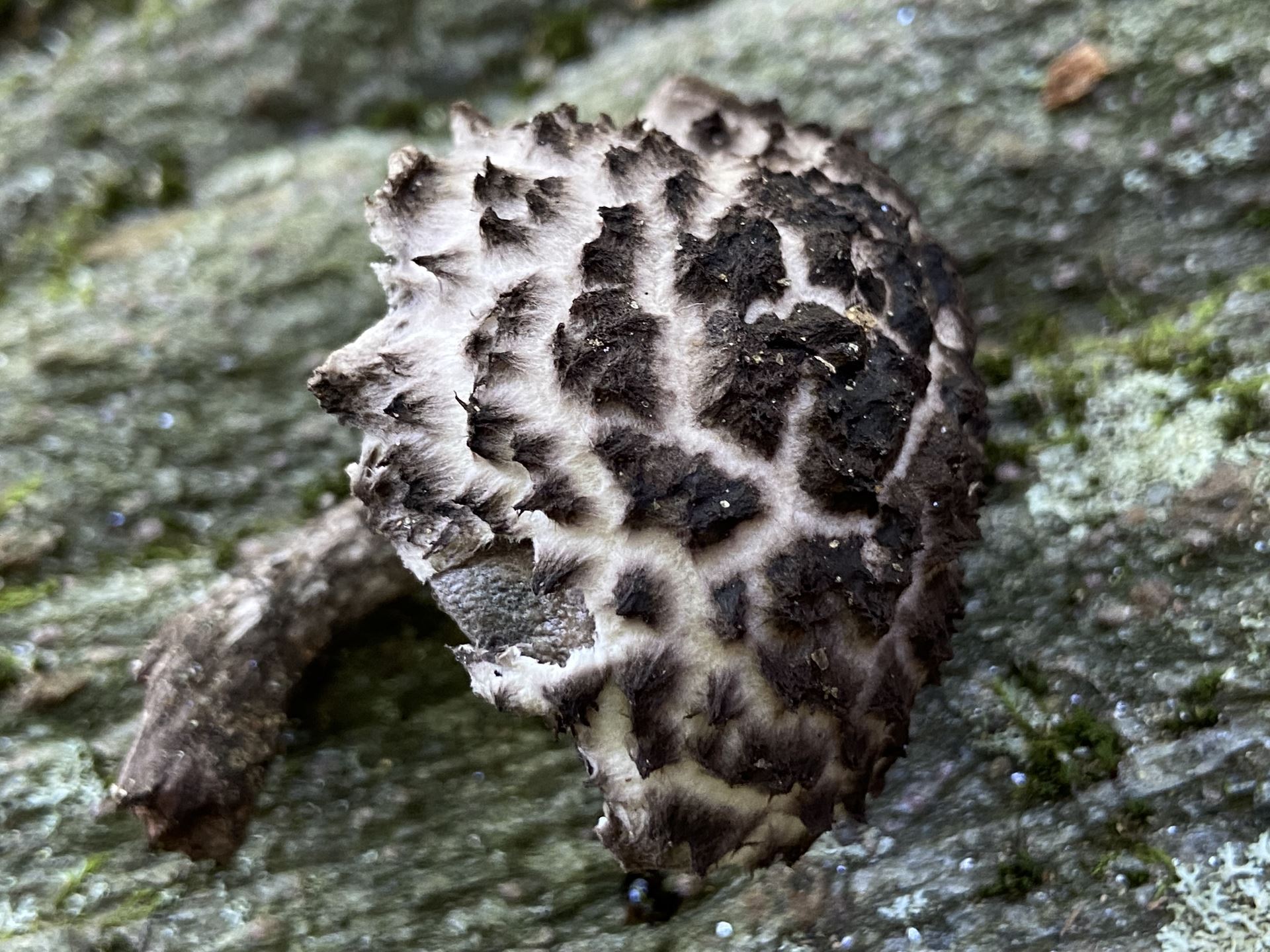

This page will cover some of the basics for the genus Strobilomyces, within the family Boletaceae. This genus is known for its black scales that cover the cap and most of the stipe. The name comes from the Greek root 'strobilos', meaning pine-cone, and 'myces' being mushroom/fungus. You may notice that the exceptionally large scales look almost like a young pine-cone in texture.
Old Man Of The Woods
Strobilomyces are a unique bolete in that they are almost only black and white in color and have a remarkable texture from their large 'woolly' scales that is easily spotted from far away. S. strobilaceus is most common but there are a few species in North America and they are difficult to separate without microscopic analysis, but they are all edible.
The Cap The coarsely scaled cap is almost always white or light grey, but sometimes the scales are large enough to obscure the cap surface. This older specimen also dried out and darkened with age. |
The stipe will have the same wooly scales and often a ring, or ring zone that the hanging sterile tissue around the margin (edge of cap) were connected to. The stipe is approximately the same width from top to bottom. You may also see some reticulation at the apex (top) of the stipe. When cut in half, the stipe is solid. |
When sliced in half, the context and inside of the non-hollow stipe will be white but may slowly bruise into a dark red color. Photo by: Alicia Cotta |
Strobilomyces are mycorrhizal with hardwoods, especially oaks. You will find them alone or scattered in the summer and fall. |
LOOKALIKES
Tylopilus albaoter
Strobilomyces are pretty hard to mistake. The closest possibly lookalike (and I use "lookalike" loosely here) is Tylopilus alboater. It is a dark capped bolete that is also mycorrhizal with oaks and occurs around the same time as Old Men, but they lack the defining feature of wooly scales on the cap. In fact, one of their common names is the 'black velvet bolete'.
It is not a toxic lookalike and is in fact also edible.
Photo by Michael Kuo
Please remember to seek other sources for confirmation before consuming any wild mushroom
.JPG/:/cr=t:14.79%25,l:0%25,w:100%25,h:70.42%25/rs=w:1240,h:620,cg:true)
.JPG/:/cr=t:25.42%25,l:0%25,w:100%25,h:46.73%25/rs=w:600,h:300,cg:true)
